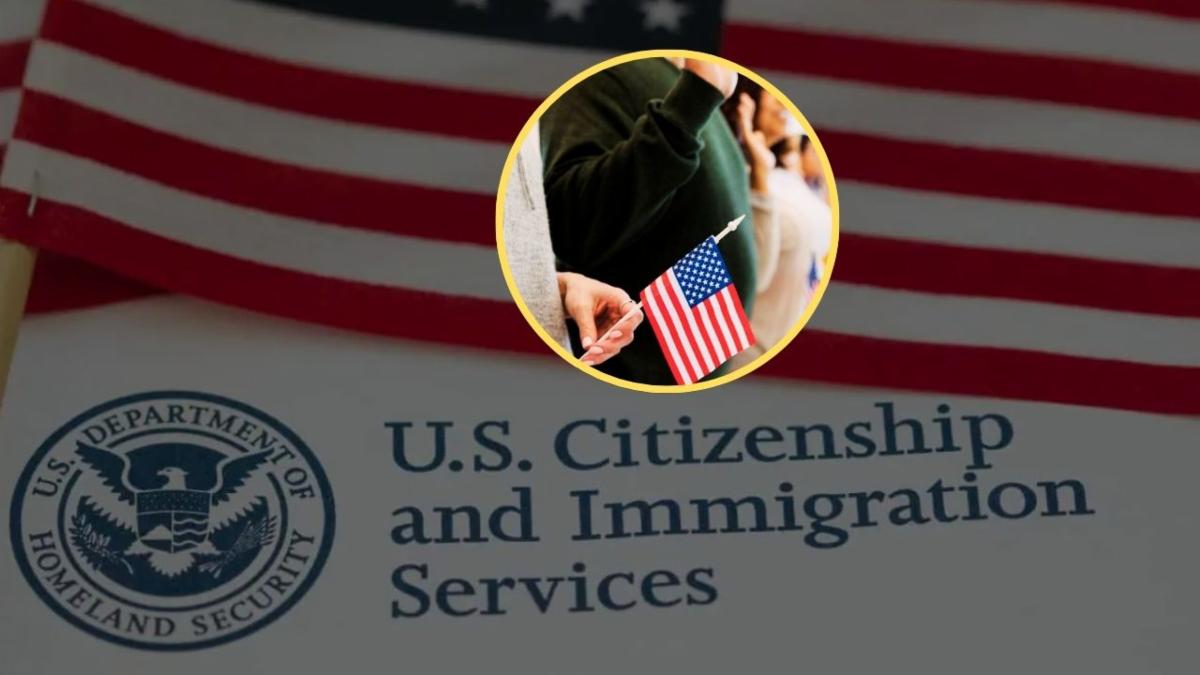Article Body
July 15, 2025 | Washington/New Delhi : The US Immigration system is going through an unprecedented crisis. According to the latest government data, the US Citizenship and Immigration Services (USCIS) faced a huge decline in the disposal of immigration cases in the second quarter (January-March) 2025. This is the first major report of the agency since the Trump government took office. Facts that raise concerns for applicants have emerged in this report.
All this pressure is not only limited to papers and agencies, but it is also directly affecting the professional, family and personal lives of millions of immigrants.
If the data is to be believed, this has never happened before in history. USCIS resolved only 2.7 million (27 lakh) immigration cases in the second quarter (January-March) 2025, which is 18% less than the second quarter of last year and 12% less than the previous quarter.
The number of pending cases has increased from 1.6 million (16 lakh) to 11.3 million (1 crore 13 lakh), which is the highest in the last decade.
More than 34,000 new cases were not even opened by the end of the quarter. After a year, this problem has come to the surface again.
Which forms will be most affected?
1. Employment-based visa (Form I-129)
25% quarter-on-quarter increase in processing time, more than 80% increase year-on-year. Direct impact on approval of major visas like H-1B and L-1. Both companies and skilled professionals are in a state of confusion.
2. Green Card replacement (Form I-90)
A whopping 938% jump in processing time in just 1 month, which is more than 8 months on average. Due to lack of legal documents, many permanent residents are facing difficulties in accessing government facilities or traveling.
3. Work Permit (Form I-765)
The pending list of new applications has increased by 87% compared to the previous quarter. The total pending Work Permit cases have increased from 1.2 million to over 2 million with a jump of 79%, while the number of delayed cases has increased threefold (181%). This will directly affect millions of immigrants-students, whose jobs, studies and livelihoods depend on this paper.
4. DACA Program
The number of active beneficiaries of the DACA program has declined by 8,000. The only satisfactory thing is that the net backlog in I-129 has decreased by 75%, but this is minor in front of the other problems.
What is the reason?
- The Streamlined Case Processing Program was suspended, which earlier allowed quick sorting of low-risk cases.
- After the arrival of the new government, some policy changes and administrative reshuffles affected the work.
- The impact of the pandemic, slowdown in digitalization and lack of recruitment are also the main reasons.
- Officials have not yet publicly clarified the reasons for the backlog crisis in detail.
- What will be the impact of the delay on immigrants?
- Millions of applicant students, professionals and families are in a state of prolonged uncertainty and mental stress.
- The corporate sector, especially the tech and healthcare industries, is facing disruption in the supply of required foreign talent.
- Many companies have had to delay joining or promotion of employees.
- In the absence of legal documents, people are facing daily problems in travel, banking and government services.
- Delay in reuniting families has increased social and emotional difficulties.
What is the next strategy of the US government and USCIS?
USCIS has been talking about improvements under the new government leadership, but the latest figures have increased concern rather than relief. Whether it is technology investment, additional staffing or procedural simplification, no major success has been achieved so far. Now applicants are eyeing the next steps of the agency, will the backlog reduce or will the wait be longer?
What will be the impact on Indian immigrants?
Applicants of Indian origin, who are a large share of H-1B, L-1, Green Card and EB group work visas, are most affected by this crisis. The large number of professionals, students and families who have gone from India will now have to wait longer than ever for visas, work permits and green cards. This is affecting not only foreign dreams but also the interests of Indian companies, universities and families.
This historic crisis in the US Immigration system is not only a big challenge for the administration, but will also determine the future direction of millions of immigrants. Will the system get back on track soon? Or the dreams and career paths across the world will continue to get further entangled in the slow files of the US administration.


Comments